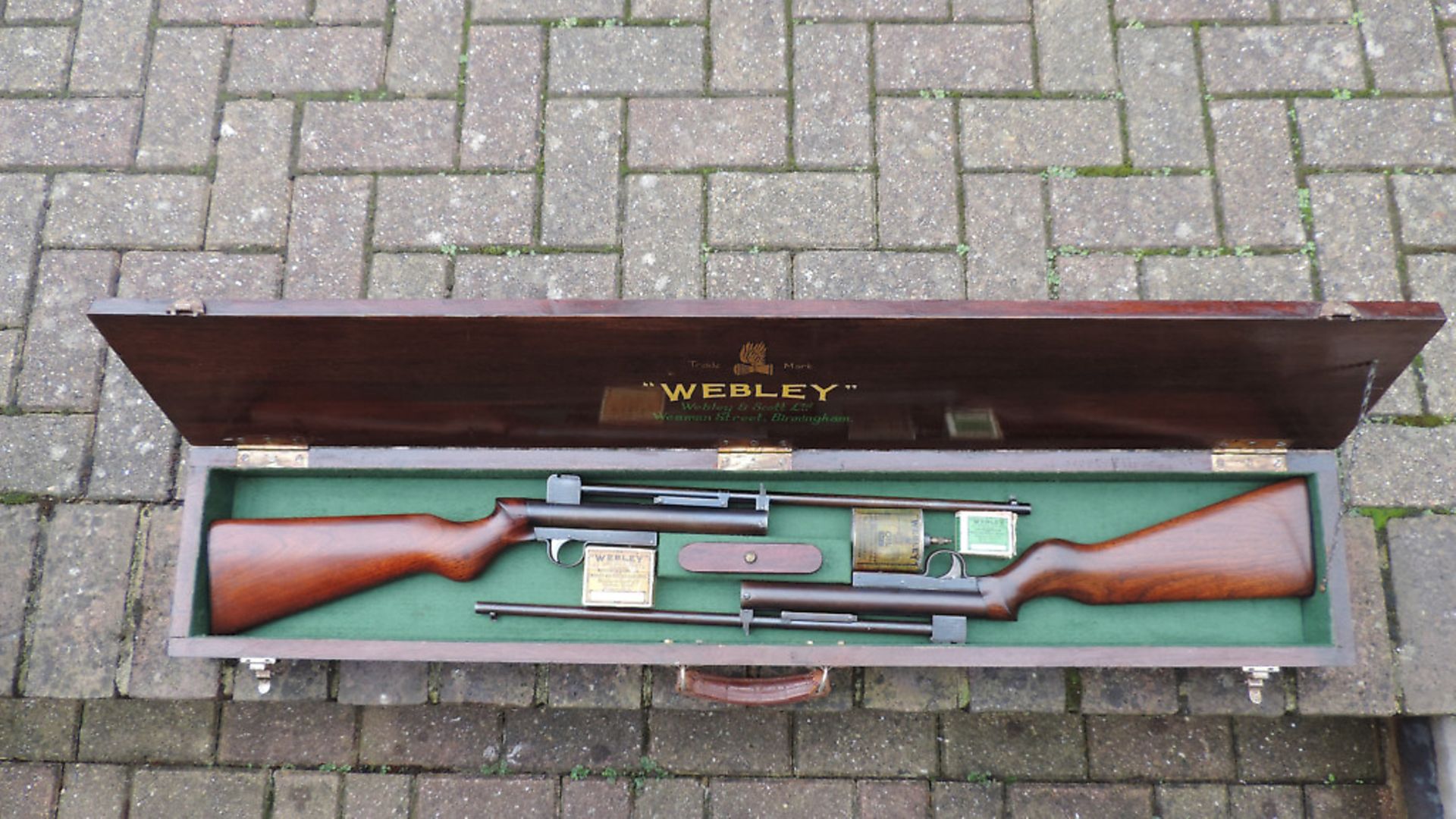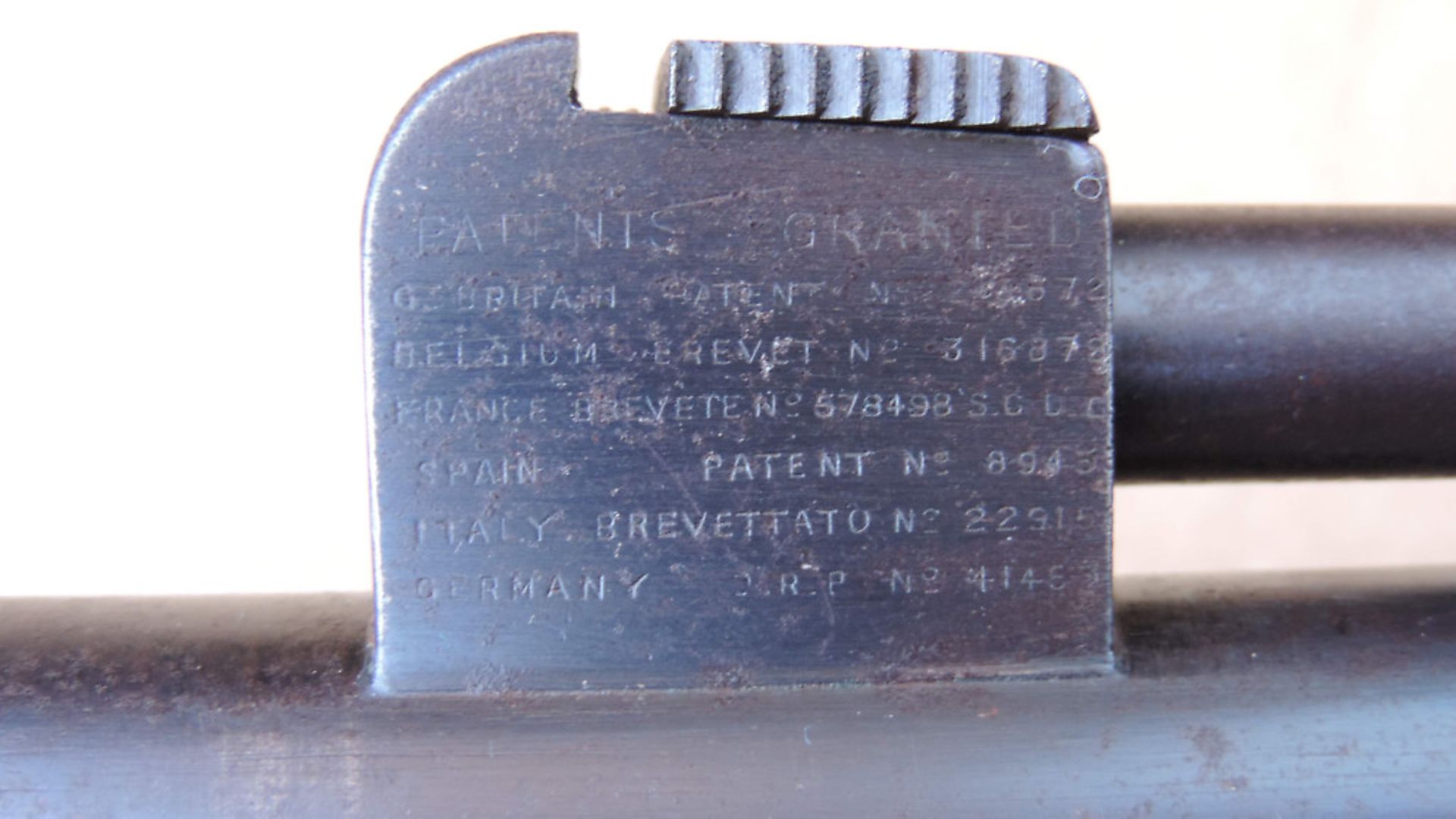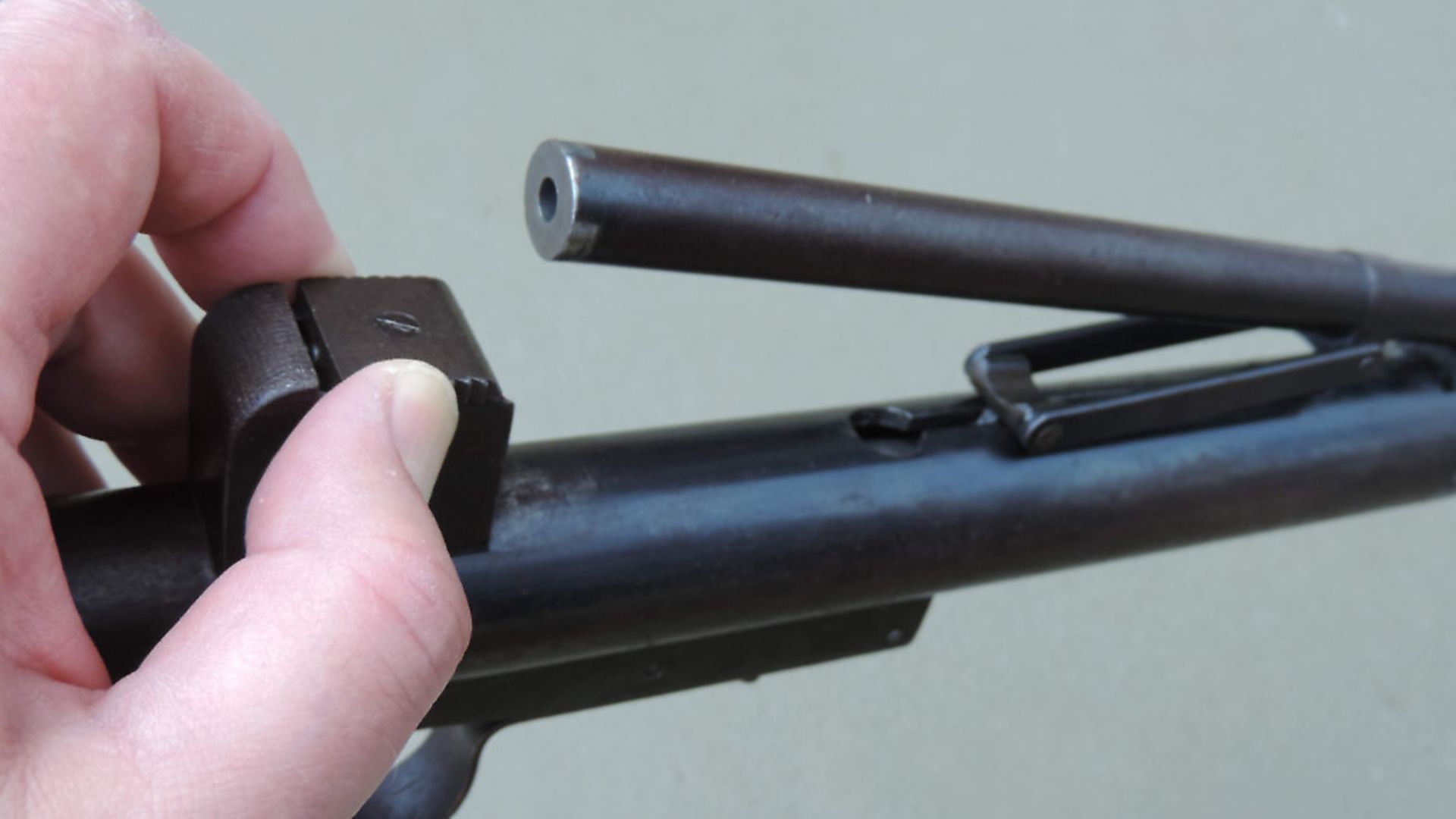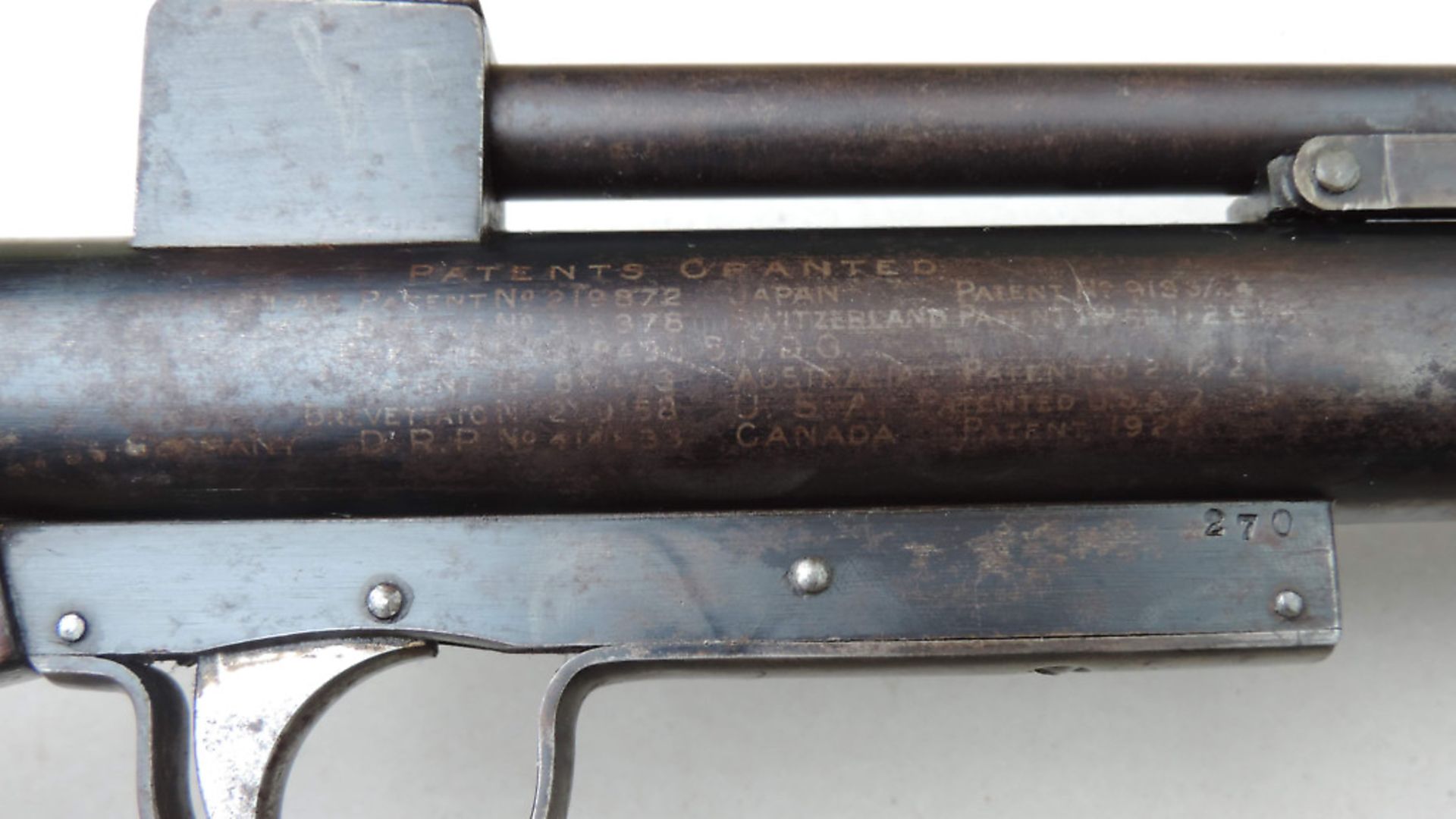John Milewski charts the history, form and function of Webley’s first air rifle
 credit: Archant
credit: Archant
Webley & Scott Ltd enjoyed tremendous success with the Mark I air pistol after introducing the patented ‘barrel over cylinder’ profile in 1924. By 1925, the Mark I pistol had proven so popular that a de-luxe Mark II ‘Target’ model with fully adjustable sights was introduced. Adapting the classic Webley profile to a longer rifle design was a natural progression for the company, and by mid-1925, the Webley Mark I air rifle was added to the rapidly expanding range of Webley air guns.
ON SHOW AT BISLEY
The August 1925 issue of the Society of Miniature Rifle Clubs (SMRC) journal The Rifleman reported that a Webley Mark I air rifle had been on view at the recent Bisley meeting. Available in either .177 or .22 calibre, the new rifle would retail for £3.12s.6d. The Mark I was described as working on the same principle as the Webley air pistol and being of a pleasing appearance. The back sight was said to be adjustable both longitudinally and latitudinally (sic), which is unusual because surviving examples are only adjustable ‘longitudinally’, lateral adjustments being made on the drift adjustable fore sight. Brass piston rings were used in the air cylinder in the same manner as the Mark II pistol.
 credit: Archant
credit: Archant
SALES PITCH
Webley advertising from c.1929 claimed that the rifle ‘gets right in the eye of the bull’ at once, and would naturally appeal to riflemen of all grades, such as air rifle clubs and the Officer Training Corps (OTC). The latter are university-based leadership training units that recruit future officers in the British Army. The handbook for the Mark I included impressive, actual size diagrams of groups shot with the Mark I rifle at 20 and 40 yards, which prompted me to see how a well-maintained example performs today.
BEAUTIFULLY MADE
 credit: Archant
credit: Archant
Webley claimed the rifle was simple, well balanced and beautifully made. With an overall weight of 5¼ lbs and a length of 34 inches, it is certainly of carbine proportions with the advantage of a full-length, 19-inch barrel. Most of the weight is toward the rear of the rifle, which can make the overall handling feel muzzle-light when on aim. I prefer more weight up front because this helps me to steady a rifle on aim; a lighter weight can make the rifle feel like it is dancing around during the sighting process.
WEIGHTS AND MEASURES
The reach to trigger is a full 14½ inches, the same as on a BSA Standard, which suits larger-framed individuals like me perfectly, and the trigger feel is not unpleasant nor exceptionally heavy. Trigger/sear pull weight can be adjusted, but should not be set too light in case the sear slips before you intend it to. The pull weight of the rifle I tested was a safe 5lbs, which can be reduced, but I opted to leave it be rather than set it too light. Muzzle velocity was a lot more consistent, averaging 591fps with Excite flatheads and 542fps with 1920 Witton pellets.
 credit: Archant
credit: Archant
STANDOUT QUALITY
The one thing that stands out is the sheer quality of Webley’s first-ever air rifle. It was made from firearms’ grade steel and alongside the company’s well-respected revolvers. The Mark I was also made on the interchangeable principle, meaning that if a part became worn or lost, a spare could be easily substituted. It was also possible to have a .177 and .22 calibre barrel with the same action and as the sights were fitted to each barrel, each could be individually zeroed to shoot to the point of aim.
 credit: Archant
credit: Archant
SIGHTING IN
Whilst on the subject of the rifle’s open sights, the fore sight is a dovetail-mounted bead that can be laterally adjusted by tapping it carefully from side to side within the barrel dovetail. The V-shaped rear sight has a modest range of elevation adjustment and can be set in place with a securing screw once zeroed. Due to the carbine dimensions of the little rifle, I found the rear sight was too close to my sighting eye, due to my deteriorating eyesight, which sadly comes with age. As long as the aiming mark has decent contrast, such as a well-lit and white painted bell target with a dark central aperture, I can aim the rifle satisfactorily, but as soon as conditions become darker or targets gloomier, I tend to struggle.
PERSONAL PREFERENCE
I would have preferred Webley to have mounted the rear sight behind the breech block in a similar manner to their contemporary pistols and incorporated a peep or aperture element, which would have significantly improved the sight picture and accuracy potential. As things stand, I was able to group reasonably well at 6 yards, certainly centrally, but there was the odd flier, which might be down to the muzzle lightness I mentioned earlier and my deteriorating eyesight.
VERDICT
One thing I cannot argue over is the beautiful lines of the Mark I; when you look at the way the frame and cylinder’s curves carry over to the walnut stock, you see how much care Webley took over the design of their first air rifle. At 95 years old, the design is still capable of reasonable performance today and is a desirable addition to any Webley collection.